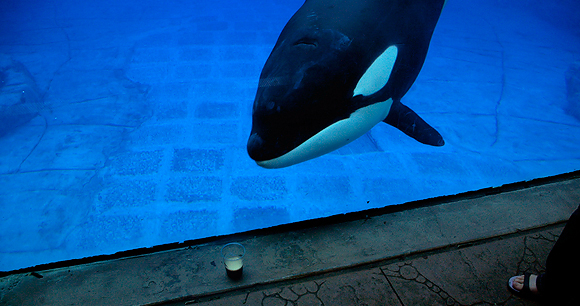
Trade in marine species—to satisfy our demand for pets, potions, food, ornaments and entertainment—can be a lucrative business. It can also be a very damaging one. Humans are removing marine wildlife from the oceans at an unsustainable rate, drastically altering marine ecosystems in the process. At the 2010 Conference of the Parties to the Convention on International Trade in Endangered Species of Wild Fauna and Flora (CITES), a record number of highly exploited and commercially valuable marine species were proposed for CITES listing in order to provide much needed restrictions on trade. (None of these proposals were approved, despite overwhelming scientific evidence to justify protection.)
Among the more profitable—and unconscionable—trade of marine species is for the marine animal entertainment industry. Bottlenose dolphins, orcas, and beluga whales (as well as sea lions) are highly sought after, being intelligent and trainable. Profits can be huge for those involved in the capture and trade of cetaceans for dolphinariums. While those capturing the animals might make a few hundred dollars on a sale of a handful of dolphins, those brokering the deals and other middle-men can make many thousands of dollars for show-quality animals, and much more if they have been trained.
Once at the dolphinariums, the animals' origins and the often tragic circumstances that brought them there are hidden from view and far from the minds of the unsuspecting public. Often, these animals were captured from the wild and traded to dolphinariums thousands of miles from their home range. Brutal drive hunts in Japan and the Solomon Islands have supplied cetaceans to dolphinariums as far away as China, Turkey, Dubai, Palau and Mexico. Captures of belugas, and from 2012-2018 of orcas, in the Okhotsk Sea in the Russian Far East have supplied facilities in China, elsewhere in Asia, and Russia itself.
The live cetacean trade is regulated by international conservation agreements. Cetacean species held by dolphinariums are listed on CITES Appendix II—which means exporting countries are required to issue a non-detriment finding (NDF) to ensure that trade will not harm the species in the wild. While CITES has adopted broad standards for NDFs and engages in capacity-building to help countries meet their NDF responsibilities, compliance remains questionable at best. Efforts to improve NDF standards have been opposed as CITES-member countries assert that individual governments should determine their own NDF protocol and procedures. CITES currently does not require NDFs to be provided to importing countries to substantiate the legality of trade. In fact, NDF’s do not have to be publicly available at all, or even in writing.